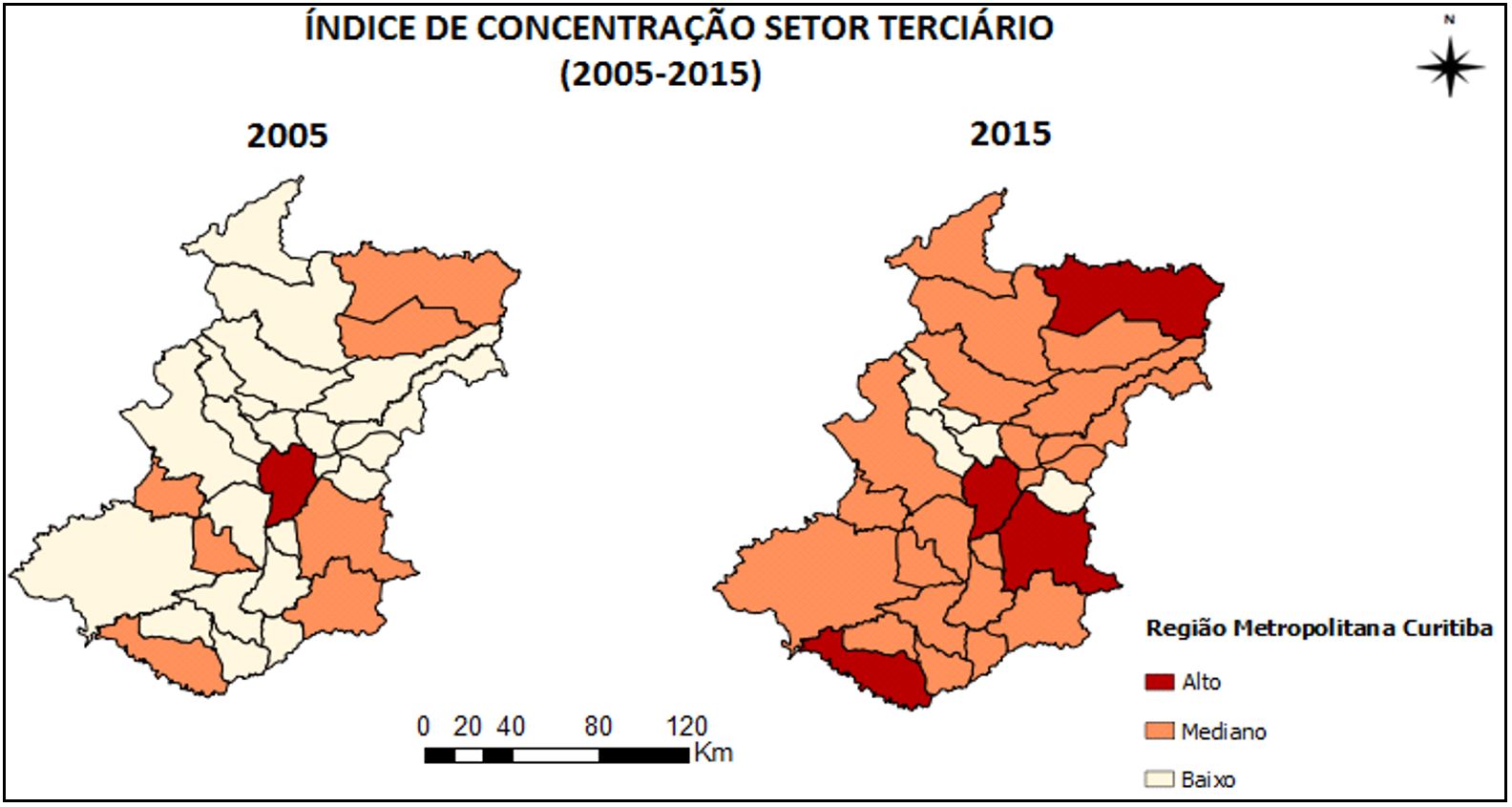Abstract
This paper analyzes the evolution of the concentration and intraregional inequalities in the industrial and tertiary sector of the Metropolitan Region of Curitiba (RMC), during the period of 2005 and 2015. RMC emerged in 1973 as one of the first metropolitan regions formally established in Brazil. Historically, the Metropolitan Region of Curitiba is one of the most developed and important of the Paraná State; however, its municipality deeply depends on the economic dynamics of its main city, Curitiba. We seek to answer the following questions: (1) whether this subordination relationship has been maintained or diminished; (2) whether the RMC municipalities have been able to aggregate more industries and activities of the tertiary sector in their territories; (3) the level of intraregional economic relations in the Metropolitan Region of Curitiba. The results showed stability in the economic structure of the region. The municipalities of Curitiba, São José dos Pinhais and Colombo were the three that presented the highest level of intraregional inequality in relation to the RMC. The municipality of Colombo, although not among the most focused in the industrial and tertiary sectors, presented one of the highest percentage increases of GDP per capita.
Keywords:
Regional development; Urban economy; Paraná State economy; Polarization; Metropolitan region

 Thumbnail
Thumbnail
 Thumbnail
Thumbnail
 Thumbnail
Thumbnail
 Thumbnail
Thumbnail
 Thumbnail
Thumbnail




